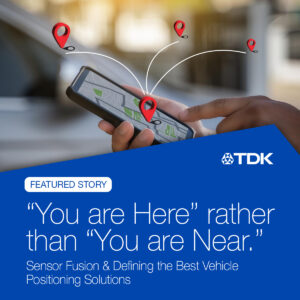With the evolution of motion sensors, human motion can now be easily assessed outside a laboratory with a set of sensors, such as inertial sensors (e.g. accelerometers and gyroscopes), barometers, and magnetometers. With the recent advances in Micro-Electro-Mechanical System (MEMS), MEMS-based sensors can be easily incorporated in small portable devices, such as watches, goggles, shoes, belts, smartphones, or custom-built devices. MEMS-based sensors are low cost, light weight, small in size, and consume low amounts of power. Consequently, these sensors are ideal for use in sport applications, as the use of miniature MEMS-inertial sensors, for recording and monitoring human motion has become popular. Extra measurements and constraints can be derived from human motion information from these sensors, and these extra measurements can be used for athlete coaching and enhancing navigation solutions in different sports such as cycling. Inertial sensors are self-contained systems not dependent on the transmission or reception of signals from an external source, thereby minimizing problems such as signal blockage, jamming, and multipath caused by environmental factors. The device’s relative position, velocity, and attitude are further derived through integration of raw measurements. In general, the device is located within the platform or tethered to the platform. These measurements from the sensors need to be transformed from device’s computational space to platform’s computational space. Typically, this is achieved by precise mounting and a proper alignment process. However, for portable devices, which tend to move in a constrained or unconstrained way within the platform, careful mounting is not an option. Therefore, techniques to determine the transformation matrix between the device’s frame and the platform’s frame are critical. MEMS inertial sensors can provide high data rate acceleration and angular rate measurements. However, the very low-cost MEMS inertial sensors available in consumer portable devices were originally designed for entertainment or short-term applications; therefore, they are not suitable for long-term applications such as navigation without absolute updates because of the eventual large accumulation of sensor errors. Even with calibration and compensation, the navigation solutions for long-term applications deteriorate over time because these errors enlarge significantly due to mathematical integration operations. For navigation purposes or other long-term applications, it is important to employ other absolute measurements as update values to reduce accumulation of errors. Global Positioning System (GPS) calculates the user’s position and velocity through trilateration techniques, providing relatively accurate position and velocity information when in open sky conditions. GPS/MEMS sensors integration is already commonly used to monitor the movements of the human body. With continuing development and with the availability of portable and wearable devices, sport activities such as cycling, winter sports, car racing, and rowing can benefit from the use of GPS/MEMS sensors integration. This paper presents techniques that use raw accelerations and angular rates obtained from inertial sensors to improve cycling navigation. The main aim of the paper is the estimation of three dimensional (3D) misalignments between the device frame and the bicycle frame, which is necessary so that the portable device can be used in any orientation without constraints. The focus of the paper is on developing techniques to calculate roll, pitch, and heading misalignments. These 3D misalignments enable the calculation of the transformation matrix between the device frame and the bicycle frame. This information is important for cycling navigation using a portable device in two respects. The first is that it enables applying Non-Holonomic Constraints (NHC) which limits velocity error based on the fact that a moving platform cannot skid or jump. NHC are in the bicycle frame and thus the transformation between device and bicycle frames is needed to apply NHC. The second importance of this transformation matrix and the misalignment is that it enables Cycling Dead-Reckoning (CDR). CDR is based on using models for speed and distance traveled per cycle as function of frequency and cycle detection; these models are obtained during GNSS availability and are utilized when GNSS is unavailable. As the sensors in the devices are able to obtain the device heading, heading misalignment between the device and bicycle is necessary to obtain the bicycle heading and consequently for calculating positions using dead reckoning. Furthermore, the speed update needs the transformation matrix between device and platform frame. The above discussion shows the importance of calculating the misalignment between the device and bicycle frames as well as the transformation matrix between them and how this can be exploited in obtaining an improved navigation solution for cycling activities using portable devices. This paper uses a unit that integrates accelerometers, gyroscopes, magnetometers, barometers, and GNSS receiver data. The navigation solution is intended to achieve real-time tracking and monitoring of the user’s performance and offline analysis and assessment of their performance. Several real-life cycling experiments were collected to analyze the proposed methods. In order to verify the performance in different locations and orientations, three different units comprising the integrated system were mounted on the upper back, thigh, and leg. The results demonstrate that the proposed methods can estimate 3D misalignments between the device frame and the platform frame. This further demonstrates that the device may be used in any orientation with respect to the platform. In addition, it helps improving the navigation solution by incorporating NHC and/or CDR, which significantly reduces the position error, especially in GNSS-denied environments. To conclude, this paper demonstrates the effectiveness of the proposed techniques in estimating 3D misalignments and deriving additional position and velocity measurements for cycling applications. The proposed system has proven to be an accurate, portable, and inexpensive integrated navigation system to provide robust and accurate positioning solution. Not only can the developed system be used to accurately track the motion of the cyclist, but it can also monitor his instantaneous corrected acceleration and turning rate. An attractive aspect of this research is that the whole architecture may be embedded in a smartphone, a device widely available to the general public.
Read the full paper here.


